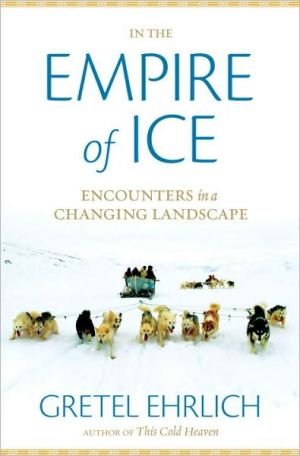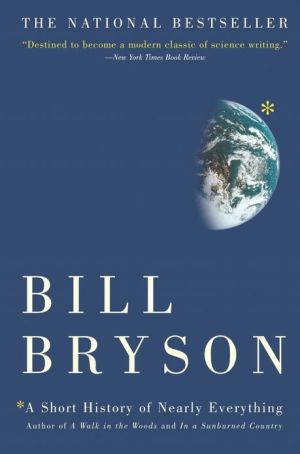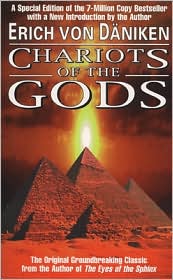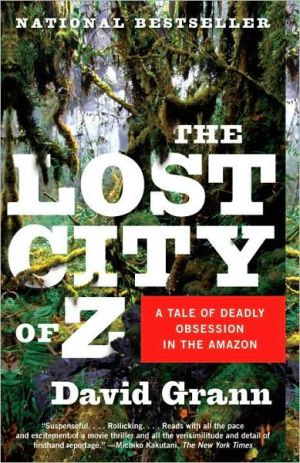In the Empire of Ice: Encounters in a Changing Landscape
In this gripping circumnavigation of the Arctic Circle, Gretel Ehrlich paints a vivid portrait of the indigenous cultures that inhabit the starkly beautiful boreal landscape surrounding the Arctic Ocean, an ice-bound wilderness that includes northern Siberia, northwestern Greenland, Canada’s vast Nunavut, and northern Alaska. Ehrlich’s expedition, supported by the National Geographic Society, documents what remains of these cultures, specifically the similarities and differences among them,...
Search in google:
In this gripping circumnavigation of the Arctic Circle, Gretel Ehrlich paints a vivid portrait of the indigenous cultures that inhabit the starkly beautiful boreal landscape surrounding the Arctic Ocean, an ice-bound wilderness that includes northern Siberia, northwestern Greenland, Canada’s vast Nunavut, and northern Alaska. Ehrlich’s expedition, supported by the National Geographic Society, documents what remains of these cultures, specifically the similarities and differences among them, including hunting traditions, shamanic and ceremonial practices, languages and legends—the ways in which they have survived, or have been assimilated, and how they are adapting to the impact of climate change on their ice-age cultures.Ehrlich is fascinated by what she calls the ecology of culture—the ways in which the human presence of indigenous Arctic people is intricately interwoven with land, rock, river, sea, and ice. Depicting human-caused climate change as only the latest and most destructive of the ills and abuses first peoples have been suffering for 250 years, Ehrlich’s haunting and lovely prose portrays ancient tribes and traditions on the edge of extinction and captures the austere beauty of their various lifeways in the frozen dreamscape of the world they have always known. The Barnes & Noble Review Gretel Ehrlich, one of the far north's most prismatic eulogists, rubs woefully close to threnody in these latest dispatches from the Arctic reaches. "This is a book about genocide…This is a book about terricide." It is a book about ice -- "womb, home, and hearse for every Arctic species" -- and what happens when it melts, taking with it into the thin polar air the ecological imagination and ethnographic landscapes of entire Arctic societies, hunting societies that co-evolved with the ice, surely as they will co-evaporate with it as the climate warms. Ehrlich has found much to admire in these people -- four groups of them are portrayed here, from the Bering Sea to the Barents Sea to Baffin Bay -- including the lightness and fluidity they bring to living on the thin edge of the wedge, their generosity and fortitude and humor, their ingenious cosmologies and modesty of needs, not to forget their tailoring: emperor goose shirts, polar bear pants, bird-skin underwear.Now the ice is disappearing, glaciers receding, forests drunkenly tottering as the permafrost liquefies, coastal villages falling into the sea -- "a whole frozen world going soft in faint light." Ehrlich is, of course, aghast that so little is being done to counter the man-made pollution that is accelerating the destruction of these lands (the greenhouse defrosting, but radioactive lichen and oil-washed beaches, too). Though there are pockets of despair -- "I'm trying to take in the losses, but I can't. I'm filled with rage." -- more so are there feisty engagements with the forces of darkness: the polluters, the crushing demands of sovereignty and capitalism, cold war and proselytization. She also makes manifest that much of the beauty of this strange, hard place -- where the sun sometimes rises and sometimes sets, its impermanence tamed by circularity, and the cold will freeze the jelly in your eyeballs -- paradoxically lies in its fragility.--Peter Lewis
Map: The Empire of Ice 6Introduction 9Chapter 1 The Ice Never Sleeps: The Bering Strait, Alaska 27Chapter 2 Living With Reindeer: The Komi of Northwestern Russia 95Chapter 3 In a Dark Land: Nunavut, Arctic Canada 139Chapter 4 The End of Ice: Greenland 213Acknowledgments 297National Geographic Society Expeditions Council 299Bibliography 303Index 313
\ From the Publisher“In her third and most wrenching ice chronicle…Ehrlich reports on her recent National Geographic Expeditions circumpolar journey within a mosaic containing shards of the grim history of the conquest of the Arctic, empathic portraits of indigenous people, scientific findings, and personal reflections…Ehrlich makes it crystal clear why the demise of Arctic culture will affect us all in this deeply knowledgeable and beautifully composed elegy to a “ruined paradise.”\ –Booklist Starred Review\ \ \ The Barnes & Noble ReviewGretel Ehrlich, one of the far north's most prismatic eulogists, rubs woefully close to threnody in these latest dispatches from the Arctic reaches. "This is a book about genocide…This is a book about terricide." It is a book about ice -- "womb, home, and hearse for every Arctic species" -- and what happens when it melts, taking with it into the thin polar air the ecological imagination and ethnographic landscapes of entire Arctic societies, hunting societies that co-evolved with the ice, surely as they will co-evaporate with it as the climate warms. Ehrlich has found much to admire in these people -- four groups of them are portrayed here, from the Bering Sea to the Barents Sea to Baffin Bay -- including the lightness and fluidity they bring to living on the thin edge of the wedge, their generosity and fortitude and humor, their ingenious cosmologies and modesty of needs, not to forget their tailoring: emperor goose shirts, polar bear pants, bird-skin underwear.\ Now the ice is disappearing, glaciers receding, forests drunkenly tottering as the permafrost liquefies, coastal villages falling into the sea -- "a whole frozen world going soft in faint light." Ehrlich is, of course, aghast that so little is being done to counter the man-made pollution that is accelerating the destruction of these lands (the greenhouse defrosting, but radioactive lichen and oil-washed beaches, too). Though there are pockets of despair -- "I'm trying to take in the losses, but I can't. I'm filled with rage." -- more so are there feisty engagements with the forces of darkness: the polluters, the crushing demands of sovereignty and capitalism, cold war and proselytization. She also makes manifest that much of the beauty of this strange, hard place -- where the sun sometimes rises and sometimes sets, its impermanence tamed by circularity, and the cold will freeze the jelly in your eyeballs -- paradoxically lies in its fragility.\ --Peter Lewis\ \ \








